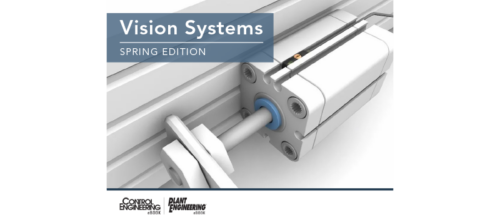Angle sensor provides full quadrature, large signal without amplification
NVE AAT001-10E TMR Angle Sensor is the first commercial sensor from NVE to use tunneling magnetoresistance (TMR), producing an "even more giant signal than giant magnetoresistance." Uses include rotary encoders, automotive rotary sensors, motor shaft position sensors, and knob position sensors.
NVE says each sensor elements contain two magnetic layers: a “pinned,” or fixed direction layer; and a movabledirection, or “free” layer. The diagram above shows configuration, using arrows to represent the two layers. An NVE PDF has more diagrams and specification details on the AAT001-10ETMR Sensor.
Eden Prairie, MN – NVE Corp. recently introduced the NVE AAT001-10E TMR Angle Sensor, NVE’s first commercial sensor to use tunneling magnetoresistance (TMR), which produces an even “more giant” signal than giant magnetoresistance, the company says, which makes it ideal for applications such as rotary encoders, automotive rotary sensors, motor shaft position sensors, and knob position sensors.Also known as spin-dependent tunneling (SDT), magnetic tunnel junction (MTJ), or tunneling magnetic junction (TMJ), tunneling magnetoresistance is a spintronic quantum effect that produces a dramatic resistance change in a normally insulating layer, depending on the magnetic field and thus the predominant electron spin in a free layer. The new device has four TMR elements configured as an angle sensor with full quadrature sine and cosine outputs, NVE says.The parts come in an ultraminiature 2.5 millimeter by 2.5 mm 6-pin TDFN package. In typical operation, an external bar or split-pole magnet provides a saturating magnetic field of 30 to 200 Oersteds in the plane of the sensor.TMR produces a very large signal with no amplification for exceptional precision, wide air-gap tolerance, and low power consumption due to high element resistance. NVE says it is a leader in the practical commercialization of spintronics, a nanotechnology that relies on electron spin rather than electron charge to acquire, store and transmit information. The company manufactures high-performance spintronic products including sensors and couplers that are used to acquire and transmit data. NVE has also licensed its spintronic magnetoresistive random access memory technology, commonly known as MRAM. www.nve.com www.GMRsensors.com -Edited by Mark T. Hoske, Control Engineering editor in chief; Register here .
Do you have experience and expertise with the topics mentioned in this content? You should consider contributing to our CFE Media editorial team and getting the recognition you and your company deserve. Click here to start this process.


